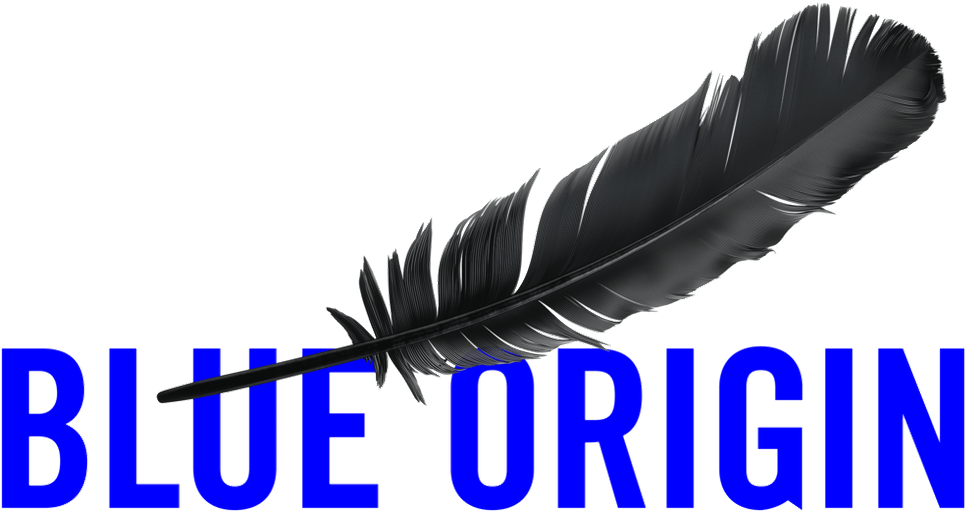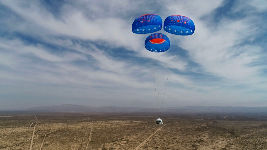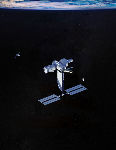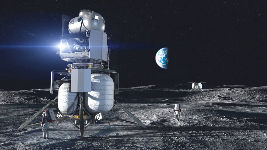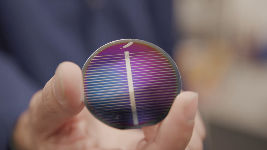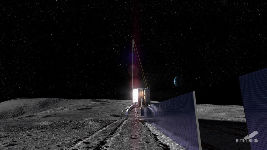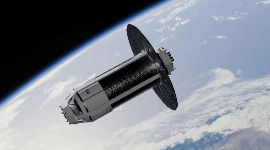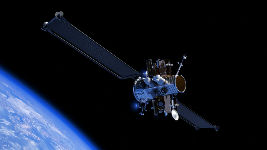Created: 2018-11-01
Updated: 2025-09-06
Company - Blue Origin
Product/Service - New Shephard
- Classification
- Human Spaceflight & Landers
- Category
- Suborbital Space Tourism
Human Spaceflight
- Fields
- Suborbital
- Status
- Active
- First launch
- 2015
New Shepard
Blue Origin to resume crewed New Shepard flights, SpaceNews, 2024-04-05.
Blue Origin resumes crewed New Shepard suborbital flights, SpaceNews, 2024-05-19.
Blue Origin launches ninth crewed New Shepard suborbital mission, SpaceNews, 2024-11-22.
New Shepard flight (NS-29) to demonstrate lunar gravity, 2025-01-24.
Notes
Product/Service - Orbital Reef
- Classification
- Space Stations & Habitats
- Category
- Commercial Space Station
- Status
- Development
- First launch
- 2027
Space Station
NASA’s Commercial Partners Continue Progress on New Space Stations, 2023-12-12.
- Blue Origin, which NASA awarded a Space Act Agreement in 2021 to develop a free-flying space station named Orbital Reef, recently completed tests for a window system and a structural demonstration.
- For the structural test, Blue Origin used a prototype of their space station’s main module, called the Core, to demonstrate the manufacturing processes required to build the final pressurized modules of the station. The test supports validation of the structural models and analytical tools for the Core’s structural design.
- The International Space Station’s cupola, a room with seven windows overlooking the Earth, is the cornerstone of crewed missions for both research and astronaut morale. Orbital Reef will incorporate multiple windows on its Core, with each window spanning about twice the size of a car windshield. For the window test, Blue Origin evaluated the window integration structure design concept and its performance against the pressures and temperatures the windows will be exposed to while in orbit.
Notes
- NASA adds funding to Blue Origin and Voyager Space commercial space station agreements, SpaceNews, 2024-01-06.
- Orbital Reef and commercial low Earth orbit destinations—upcoming space research opportunities, 2024-03-29.
- Orbital Reef: Designing an Orbital Lab to Reflect the Voice of the Custom, 2024-07-31.
Created: 2022-01-01
Updated: 2025-09-06
Product/Service - Integrated Lander Vehicle (ILV), Blue Moon
- Classification
- Human Spaceflight & Landers
- Category
- Human Landing System
Commercial Lunar Lander
- Fields
- Moon
- Status
- Development
- First launch
- Not announced
Human Landing System
One of the 3 awardees for the NASA Lunar Human Landing System.
Blue Origin will build the descent element which is powered by BE-7 cryogenic engines three years in private development, with cryogenic technologies now under Tipping Point support.
- Lockheed will build the ascent element that includes the crew cabin, which will have significant commonality with Orion. Northrop Grumman will build the transfer element based largely on its Cygnus cargo module that services the International Space Station.
- Northrop Grumman is also leading development of a future refueling element for a sustainable lander demonstration. Draper will provide the guidance, navigation and control, avionics, and software systems that draw largely on similar systems the company has developed for NASA.
- In their proposal, the National Team outlines a plan in which the ILV can dock with either Orion or the Gateway to await crew arrival. The Blue Origin National Team’s elements for the Human Landing System can be launched individually on commercial rockets or combined to launch on NASA’s Space Launch System.
Blue Moon - Cargo Lander
News
Blue Origin targets 2025 for cargo lander’s inaugural moon trip, with humans to follow, 2024-03-04.
- Jeff Bezos’ Blue Origin space venture is aiming to send an uncrewed lander to the surface of the moon in the next 12 to 16 months, according to the executive in charge of the development program.
- The Pathfinder Mission would demonstrate the MK1’s capabilities — including its hydrogen-fueled BE-7 engine, its precision landing system and its ability to deliver up to 3 tons of payload anywhere on the moon.
- The in-space refueling operation would make use of a cislunar transporter, built by Lockheed Martin, that could travel between low Earth orbit and lunar orbit with supplies. “We are now building with NASA the infrastructure to ensure lunar permanency,” Couluris said.
Notes
Created: 2022-09-09
Updated: 2025-09-06
Product/Service - Blue Alchemist
- Classification
- In-Space Manufacturing
- Category
- ISRU (In Situ Resource Utilization)
- Fields
- Orbital Microfabrication
Moon
- Status
- Development
- First launch
- Not announced
ISRU
- We start by making regolith simulants that are chemically and mineralogically equivalent to lunar regolith, accounting for representative lunar variability in grain size and bulk chemistry. This ensures our starting material is as realistic as possible, and not just a mixture of lunar-relevant oxides.
- We have developed and qualified an efficient, scalable, and contactless process for melting and moving molten regolith that is robust to natural variations in regolith properties on the Moon.
- For protection from the harsh lunar environment, solar cells need cover glass; without it, they would only last for days. Our technique uses only molten regolith electrolysis byproducts to make cover glass that enables lunar lifetimes exceeding a decade.
- Because our technology manufactures solar cells with zero carbon emissions, no water, and no toxic ingredients or other chemicals, it has exciting potential to directly benefit the Earth.
- Track 1 supports one-year trade studies to identify ISRU technology gaps and further define the benefits of including ISRU in mission architectures. In addition to Blue Origin, Track 1 participants include United Launch Alliance, the University of Illinois at Urbana and UTC Aerospace Systems.
- Track 2 supports component development and testing in simulated space environments. Companies selected for Track 2 are BlazeTech Corp., Paragon Space Development Corp., Skyhaven Systems and Teledyne Energy Systems.
- Track 3 focuses on extensive subsystem development and testing in simulated space environments. The Track 3 companies are Honeybee Robotics Spacecraft Mechanisms Corp. and OxEon Energy LLC.
- Blue Origin of Kent, Washington, $34.7 million.
- The company will advance an end-to-end in-situ resource utilization (ISRU) system that can extract oxygen, iron, silicon, and aluminum from lunar regolith simulant and use the extracted materials to produce solar cells and wire.
- Blue Alchemist to make solar cells on the Moon using moondust, 2023-07-27.
DARPA LunA-10 Program Study
BLUE ORIGIN LUNA-10 AN EXPEDITED APPROACH TO A COMMERCIAL LUNAR SURFACE ARCHITECTURE, 2024-04-25.
Created: 2023-02-05
Updated: 2025-09-06
Product/Service
- Classification
- Space Utilities
- Category
- Resources - Energy
- Fields
- Nuclear Power
Nuclear Propulsion
- Status
- Concept
- First launch
- Not announced
Nuclear
Created: 2023-03-12
Updated: 2025-09-06
Product/Service - Blue Ring
- Classification
- In-Space Transportation
- Category
- Transport Service (Earth-LEO)
Transport Service (LEO-GEO)
Persistent Platform
Space Tug
Robotic Space Station
In-Space Logistics
Space Logistics Platform
In-Orbit Computing
In-Space Mobility
In-Space Communications Relay
- Fields
- Transport Service (In-Space)
- Status
- Development
- First launch
- 2026
Blue Ring
Blue Ring is part of a newly formed Blue Origin business unit called In-Space Systems.
- Using commercial technology to facilitate greater in-space mobility for the Department of Defense (DoD), the Defense Innovation Unit (DIU) is working with three companies to provide logistics services enabling low-cost, responsive access to GEO and other exotic orbits beyond LEO).
- Blue Origin received a contract to demonstrate a heavy utilitym-OLV system utilizing their ‘Blue Ring’ platform.
- Blue Origin is in the final stages of developing the Dark-Sky-1 mission system, which will demonstrate core mission operation and flight system capabilities.
NASA Selects Commercial Service Studies to Enable Mars Robotic Science, 2024-05-01.
- Large payload delivery and hosting services - Blue Origin, LLC, Kent, Washington — adapt an Earth- and lunar-vicinity spacecraft.
- Next-generation relay services - Blue Origin, LLC — provide communication relay services via an adapted Earth- and lunar-vicinity spacecraft.
- Agreement with Scout Space to integrate one of its flagship next-generation space domain awareness (SDA) Owl sensors.
- Blue Ring's first mission is expected to launch in spring 2026 with initial injection into Geostationary Transfer Orbit (GTO), with additional services performed in Geostationary Orbit (GEO).
NASA Selects Six Companies to Provide Orbital Transfer Vehicle Studies, 2025-08-05.
- NASA has selected six companies to produce studies focused on lower-cost ways to launch and deliver spacecraft of various sizes and forms to multiple, difficult-to-reach orbits.
- The firm-fixed-price awards comprise nine studies with a maximum total value of approximately $1.4 million.
- Blue Origin will produce two studies, including one for Blue Ring, a large, high-mobility space platform providing full-service payload delivery, on-board edge computing, hosting, and end-to-end mission operations. It uses hybrid solar-electric and chemical propulsion capability to reach geostationary, cislunar, Mars, and interplanetary destinations. The second is a New Glenn upper stage study.
Blue Origin's Transporter vehicle
- One newly unveiled key element is the "Transporter," a vehicle that can be launched on a single Blue Origin New Glenn rocket into low Earth orbit. It will harvest leftover propellant from the booster's second stage and then haul the hydrogen and oxygen to lunar orbit.
- Transporter is designed to lug roughly 110 tons (100 metric tons) from Earth orbit to lunar orbit. And in Mars mode, it will be able to haul 33 tons (30 metric tons) into orbit around the Red Planet.
Mars Telecommunications Orbiter
Status Comment
Notes
- Redwire to provide components for Blue Ring transfer vehicle, SpaceNews, 2024-01-22.
- Blue Origin touts capabilities of Blue Ring transfer vehicle, SpaceNews, 2024-02-02.
- Blue Origin’s First Blue Ring Mission To Demonstrate Space Domain Awareness with Scout Space Sensor, 2025-07-24.
Created: 2024-01-20
Updated: 2025-09-06
Product/Service
- Classification
- Surface Habitats & Structures
- Category
- Surface Habitats
- Status
- Development
- First launch
- 2033
Blue Origin's lunar habitat is slated sometime a year later, 2033.
Created: 2025-01-06
Updated: 2025-09-06
Product/Service
- Classification
- Cargo Transportation & Landers
- Category
- Transport Service (Re-Entry)
Point-to-point
- Fields
- Space Capsule
- Status
- Concept
- First launch
- Not announced
Blue Origin to study how to transport cargo from orbit to Earth for the Pentagon, 2025-08-21.
- Blue Origin’s contract, according to the sparse award listing, is for an analysis of how its tech could support “point-to-point material transportation.” The listed place of performance is Merritt Island, Florida, Blue Origin’s home on the Space Coast and where it is developing the heavy-lift New Glenn rocket.
- The contracts under the Air Force’s Rocket Cargo program are relatively small — Blue Origin’s comes in at $1.37 million and Anduril’s at $1 million. But they could be the first steps in revolutionizing how the Pentagon transports cargo.
Created: 2025-08-30
Updated: 2025-09-06
Sources
Most sources should be linked in the texts and headings as revealed by mouse-over, but here are they listed for visibility.
News, Research, Projects and Patents
| Title | Type | Date | Summary |
|---|---|---|---|
| NASA, Space Force see growing opportunities to use commercial space services | News | 2021-12-02 | |
| Blue Origin’s team turns in its moon landing proposal — and provides a sneak peek | News | 2020-12-09 | > Amazon CEO Jeff Bezos’ Blue Origin venture and its partners in the space industry say they’ve given NASA their proposal for a landing system designed to carry astronauts down to the surface of the moon and bring them back up. And they’ve released a 10-minute video explaining how they plan to do it. |
| Tech Demos for NASA’s Artemis Program | Video | 2020-12-09 | |
| Achieving Bezos’ bold vision of space settlement requires bold policy direction | News | 2019-05-20 |

